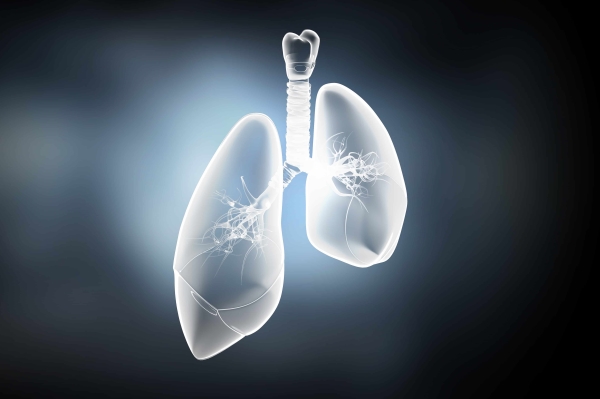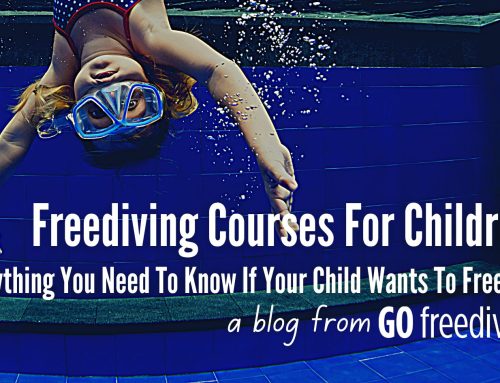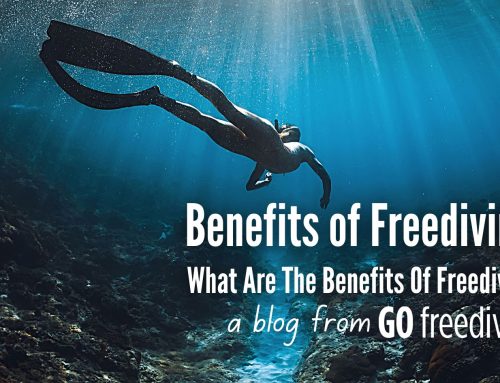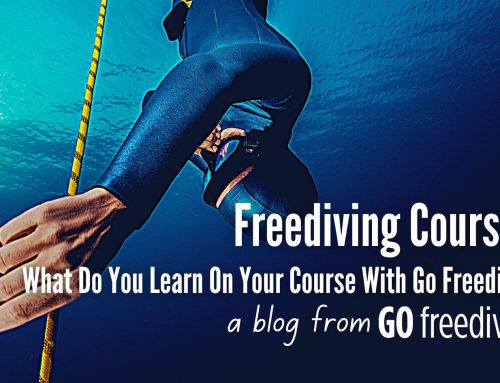Welcome to part seven of The Beginner’s Guide to Freediving: Breathing for Freediving (my pet subject). It covers how to breathe before and after a dive and how to take the most effective pre-dive breath.
Breathing for Freediving
Correctly breathing for freediving is critical for your safety and enjoyment. There are different ways to breathe before a freedive and after, as well as a specific way to take your last breath before a dive. Whilst it seems totally natural, breathing is actually a complicated process. In this article in the series we will give you an overview of what is going on in your body, how to breathe properly before a dive and how to recover properly.
Breathing for Freediving – How We Breathe
The first thing to consider when breathing for freediving is where oxygen is found in the body. It is stored in the myoglobin in our muscles; bonded to haemoglobin in our blood; and in the air that we have in our lungs. If we are at rest, whether sitting on a sofa watching television, lying in bed, or bobbing on the surface of the water preparing for a freedive, our muscles are at almost their full oxygen-carrying capacity. Similarly, if we were to measure the oxygen concentration in the blood, we would find that an oximeter attached to the end of one of our fingers would read 97-99% saturation. We are then left with the task of emptying and filling our lungs in order to reach our maximum oxygen carrying capacity.
The second thing to consider when breathing for freediving is that our breathing is both automatic and autonomic. For most of our life (and particularly when we are asleep) our breathing is automatic, with the body naturally adjusting our breathing rhythm to suit our level of activity. However, we also have the ability to control our breath, making it autonomic, which can be a benefit as well as a hindrance.
When we become aware of our breathing it changes as our mind gets in the way of the self-regulating automatic system inside of us. This generally means that we start breathing quicker, which can rapidly lead to hyperventilation. When we breathe before a freedive, it is critical that we slow the breathing rate and reduce the quantity of air coming in and out of the body with each breath, reducing the risk of hyperventilation.
When we are at rest and our breathing is automatic, we inhale and exhale a relatively small amount of air – about 20% of our total lung capacity. This amount is known as ‘tidal volume’ and involves a passive inhalation and a passive exhalation. Breathing passively puts almost no strain on the breathing muscles as it solely uses the diaphragm, a large dome-shaped muscle that separates the abdominal and chest cavities. (It is worth noting that people with compromised breathing, through physiological, psychological, or a combination of factors may not breathe autonomically as described.) The diaphragm is responsible for all our breathing at rest and most of our breathing at other times, aided by the intercostal muscles between the ribs and the clavicle muscles around the collarbones. Relaxed diaphragmatic breathing is also known as abdominal breathing, or belly breathing, as the only part of the upper body you will see move is the belly, gently expanding as your breathe in and deflating as you breathe out. It is also worth noting that at rest, there is a natural pause at the end of the exhalation, which can be much longer than the inhalation and exhalation combined.
When people become conscious of their breath, for example when they are preparing for a dive, they often abandon this pause in at the end of their exhalation as it makes them feel anxious. This feeling, as well as a myriad of other breathing difficulties, means that learning to breathe in a relaxed fashion actually becomes a process of unlearning the bad habits that we have picked up during our lives, and letting the body breathe freely in a natural and instinctive way.
Consequently, the techniques when breathing for freediving are designed to relax your breathing, your body, and your mind.
Breathing for Freediving – Breathing Before a Freedive
- Longer exhalation than inhalation – when we exhale, our heart rate decreases, so extending the length of the exhalation, even for a brief moment, can help calm the body and mind and reduce oxygen consumption
- A pause at the end of the inhalation and exhalation – this helps slow the breathing rate when the tendency is to increase it. The pause at the end of the exhalation should be longer than the one at the end of the inhalation
- Relaxed – a passive inhalation and a passive exhalation so there is no strain on the intercostal or stomach muscles and the heart rate is kept low
- Usually through the mouth if we are wearing a mask
In the freediving world, the preparation before a dive is called the ‘breathe up’, however that sounds like an active process, whereas correct preparation is more of a passive process, a ‘breathe down’. The secret is to not get bogged down with a complicated preparation. You need to be as relaxed as possible without hyperventilating. Less is more. If it helps, just close your eyes and imagine you are in bed, falling asleep.
The position you adopt when breathing before a freedive also impacts how much oxygen you have in your system. Breathing up while lying prone on your front or back ensures that you do not use any muscles to keep you in position and, with very little water pressure acting on your body, it is easier to take a full breath. Some freedivers are more comfortable preparing in an upright position, holding onto a rope or buoy. This requires energy to maintain your body’s position and there is also more water pressure, so it can be more difficult to take a full breath. What matters more than anything, though, is that you find a position you feel comfortable with and suits the conditions you are diving in.
The length of time you spend preparing before a dive depends on when your last dive was, how rested you are, and how deep you intend to dive. If you are rested then you should spend a maximum of around two minutes at the line before you dive to reduce the risk of hyperventilation and keep the line clear for other divers if you are sharing one.
When breathing for freediving, your last breath should involve a complete exhalation to empty your lungs of air to their residual volume, and then a complete inhalation to fill them with fresh air. You should do no more than two complete breaths before you dive (I and my team teach only one), as any more is hyperventilating (see below). After your gentle, relaxed breathe up, you take a quick, deep breath in and then a full exhale, pulling the stomach muscles in to expel as much air as possible. The last breath should be taken in three calm and distinct stages:
- Expand the stomach, filling the lower region of your lungs completely. Your rib cage and chest shouldn’t move
- Expand your rib cage and breathe into the central region of your lungs
- Open your mouth wide (unless breathing through a snorkel) and fill the very upper region of your lungs, the area of your collarbone and throat. You can also raise your head to try to get more air in
After calm and relaxed preparation, don’t rush the last breath. Put in a pause after you have completely filled your lungs, then remove your snorkel if you are using one, and begin your dive.
Breathing for Freediving – How To Do Recovery Breathing
When you surface following your dive, the breathing you do is called ‘recovery breathing’. It is important not to exhale any air until your mouth has cleared the surface, as exhaling on the way up deprives your body of oxygen and can make you more negatively buoyant. The purpose of recovery breathing is to re-oxygenate your body as quickly as possible while not expelling all the air from your lungs, as while it’s low in oxygen it still has some. Forceful and complete exhales can cause you to black out.
- Make sure you are holding onto something for support (whether it’s a buoy, side of the pool, buddy, etc.) so your airways do not dip below the water
- Quickly exhale a small amount of air
- With your mouth wide open, take a quick, deep breath in
- Close your mouth for a second
- Exhale a short, passive breath
- Repeat steps three to five for at least 30 seconds or longer, until you are completely recovered
It is important not to talk at this point, instead just focus on your recovery. Your buddy should watch you for at least 30 seconds after you surface. It’s important that recovery breathing becomes an automatic response and you should do it after every dive, no matter how shallow or deep, short or long.
Hyperventilation and why it is dangerous for freedivers
So what is hyperventilation and why is it such a bad idea? Hyperventilation is any form of conscious or subconscious over-breathing. This means breathing more than the body needs at any given time. For instance, you would not breathe at the intensity you do when walking around if you were just sitting on the sofa, and you would not breathe at the rate you do when running if you were just walking. Hyperventilation can be a chronic and subtle disease in the body, giving rise to a host of serious health problems. So why would anyone hyperventilate when they are preparing for a freedive?
When you hold your breath, rising levels of carbon dioxide are the body’s first and most important trigger to breathe. This can be very uncomfortable and people think, incorrectly, that their body is running out of oxygen. What over-breathing does is reduce the level of carbon dioxide in the blood (carbon dioxide levels are 150 times higher in the blood than in air, so over-breathing can have a dramatic affect). As a result, if someone over-breathes before a dive, during the dive they have lower levels of carbon dioxide in their blood, making the dive feel easier. Novice freedivers interpret this as having more oxygen and so continue to hyperventilate.
However, hyperventilating is dangerous for freedivers for the following reasons:
- Having reduced the levels of carbon dioxide in the blood, the diver has negated their body’s primary urge to breathe, risking a black out
- It constricts the arteries supplying blood to the brain and in extreme cases can cause a black out before the diver has left the surface
- It raises the heart rate, thus increasing the rate at which the body uses oxygen
- It can take the body from a relaxed (sympathetic) state of being, to a ‘flop, freeze, fight or flight’ (parasympathetic) state
- It causes oxygen to bond more strongly to haemoglobin in the blood (the Bohr effect), reducing the body’s ability to use the oxygen when it most needs it
Symptoms of hyperventilating can include:
- Tingling the in the extremities
- Feeling lightheaded
- Metallic taste in the mouth
- Fingers and thumbs cramping inwards
If you think you have hyperventilated in your preparation for a dive, hold your breath for a few seconds and add longer pauses in between inhales and exhales. Always remember, you should breathe in a very relaxed fashion – just imagine you are falling asleep. If your buddy can hear you breathing then you are not relaxed!
Written by Emma Farrell
The Beginner’s Guide to Freediving is written by Emma Farrell. She is one of the world’s leading freediving instructors and has been teaching freediving since 2003. She is the author of the book ‘One Breath, a Reflection on Freediving’, has written courses that are taught worldwide, taught gold medal winning Olympic and Paralympic athletes, and has appeared numerous times on television teaching everyone from Hugh Fearnley-Whittingstall to Ellie Simmonds how to freedive.
Learn to freedive with the author of The Beginner’s Guide to Freediving
Go Freediving is the longest established, most experienced and friendliest freediving course provider in the UK, led by world class freediving instructor trainer Emma Farrell, and her team of personally trained instructors. No other course provider has such a good instructor to student ratio, safety record and personal touch.
Whether you’re a beginner dipping your toes into the world of freediving, a seasoned pro looking to turn professional, or simply a freediver of any level who wants the best freediving holiday in the world, we’re here for you!
Learn more about Freediving
Read the previous chapter of The Beginner’s Guide to Freediving – ‘Safety for Freediving’ here now
Read the next chapter of The Beginner’s Guide to Freediving – ‘Effects of Pressure and Depth on Freedivers’ here now
Keep in touch with everything Freediving
Subscribe to our mailing list for weekly newsletters with exclusive articles, news, films, offers and more!








Leave A Comment